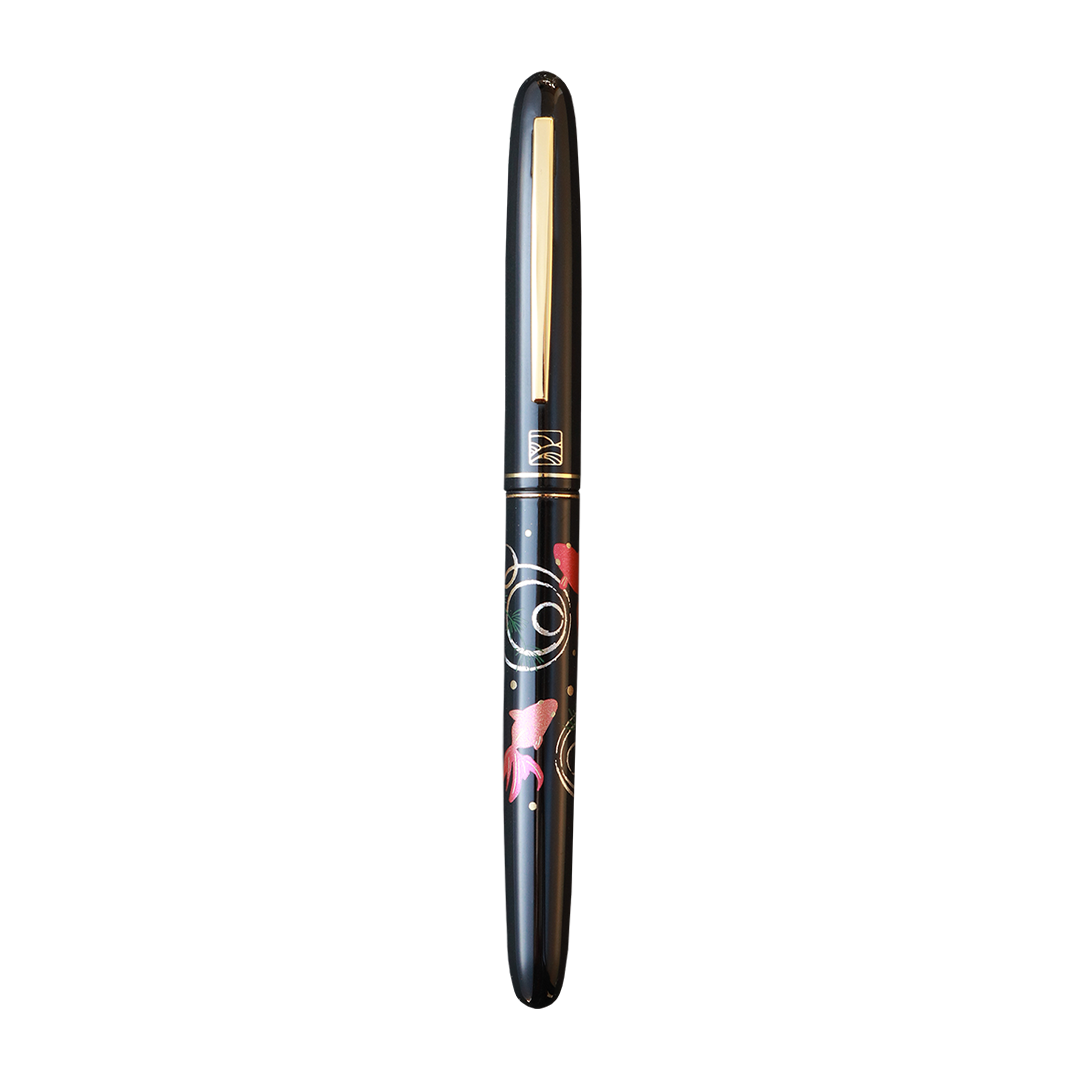Wancher x Kuretake Kindai Maki-e - Kingyo
Wancher x Kuretake Kindai Maki-e - Kingyo
Couldn't load pickup availability
Description
Description
Wancher x Kuretake
Together with Kuretake, we are determined to bring you the artwork of Kindai Maki-e that represents Japanese symbols, culture, and folklore.
To complete the fine artwork of artisans from Kuretake, we attach the nibs and clip as part of expressing our passion and stories in these fountain pens. With the utmost sincerity, we present you the traditional Japanese design and technology of the Maki-e Monogatari fountain pen for your own use or as a gift for someone else.
Kingyo
As part of its commitment to extending the appreciation of Japanese traditional design, Kuretake has created a new design for the collection, Goldfish or Kingyo exclusively for Wancher. Together with Kuretake, we are delighted to continuously present you with a unique design that embraces Japanese culture.
With two goldfish on the clear pond, the original design portrays zen art of the tranquility in a Japanese garden. Goldfish are believed in Asian cultures as a lucky symbol, bringing abundance and fortune to those who own them. Its appearance in many eminent classic Japanese artworks and is regarded as a prestigious aquatic creature. Today, goldfish remain featured in many contemporary Japanese arts as a form of aesthetic adoration and a crucial part of the culture.
Kindai Maki-e and Ukiyo-e
Technique Inspiration
Ukiyo-e is a traditional Japanese painting style that is published using silkscreen printing techniques, similar to Kindai Maki-e. Ukiyo-e involves ink-printing through stencils onto media such as woodblock and paper screens. The art of adhering the picture, to the surface is what makes Kindai Maki-e and Ukiyo-e are comparable. In 1860, this Japanese printmaking technique actually influenced the world-renowned impressionist painter, Van Gogh.
Pen Design
The design is inspired in part by the Japanese 17th century painting style known as Rimpa, which has influenced many artwork to date. It incorporates natural elements such as flowers, trees, mountains, and animals, which are also common in Japanese traditional paintings.
For the final touch, the design is coated with clear urushi to add extra protection for the gorgeous design.
The Monogatari Fountain Pen
The Making Process
The pen has a surprisingly thin and light body without compromising its durability. With a jointless body, the charm of Maki-e drawings is fully extended. To make the shape of the body, the craftsmen have to utilize a single aluminum sheet to forge it downward until it reaches the shape of a pen. To achieve a light but long-lasting pen, such painstaking technique necessitates both delicacy and strength.
The body and cap are made by squeezing the metal during the molding process, which requires arduous labor. As for the body, the beauty of modern Maki-e is reflected in its own story to tell.
Shape
The bullet-shaped Maki-e fountain pen, smooth and moderately sized, is compact, will fit comfortably in your hand, and is perfect for daily use. The nib size is available in Fine and Medium, also compatible with Kuretake's fountain pen nibs.
Specifications
Material: Aluminum
Method: Press drawing molding
Making technique: Kindai maki-e
Pen Size: diameter 11 x 137 mm
Ink-filling system: Eyedrop method, Cartridge, and Converter (European size)
Country of Origin: Japan
Nib Material: Stainless steel iridium point
Nib size: F, M
Country of Origin: Taiwan
*All parts are assembled in Japan
Packaging
Wooden box, Cartridge, Converter
Duties & Taxes
Duties & Taxes
For international orders, customers are responsible for any sales tax, duties, brokerage fees, and / or other taxes imposed by the government of the destination country, in addition to the quoted or invoiced price.
Learn about Wancher's terms of service for our premium fountain pens and writing instruments. Find important information on purchases, warranties, and customer rights. Essential reading for all Wancher pen enthusiasts and collectors.Share














